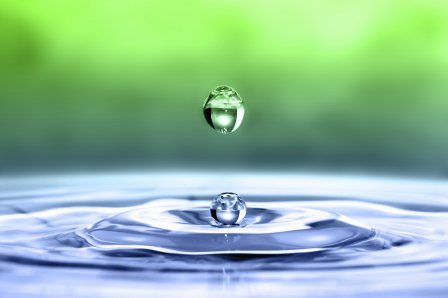
Below the Earth’s surface, water—perhaps our most precious resource—is stored in geological formations called aquifers. “It’s important to know that more than 95 percent of the Earth’s accessible freshwater is in these underground reserves. That’s water we pump from the ground and drink and use for irrigation and for industry,” says hydrologist Prof. Brian Berkowitz, Head of the Department of Environmental Sciences and Energy Research at the Weizmann Institute of Science.
However, this valuable water is not sufficiently protected. A wide range of contaminants can seep down into groundwater supplies. “We have problems with chemical spills from factories, pesticides from farmland, gasoline that leaks from underground storage tanks, inadequately treated sewage from failing septic systems—the list goes on and on,” says Prof. Berkowitz.
Using computer models and laboratory experiments, Prof. Berkowitz and his research team study how water and pollutants move in groundwater systems, and develop new theories to explain these movements. Computer modeling is critical to predicting how, say, an oil spill could move, and is a key part of any environmental plan, particularly if remediation (cleanup) is a possibility.
Several years ago, Prof. Berkowitz developed an innovative modeling technique while studying flows in regions such as Nevada, where the U.S. hoped to store nuclear waste, and which has hard rock formations containing many fractures. Engaged in determining what would happen if water and radioactive material were released into the fractures, he had a “weird and wonderful idea”—using magnetic resonance imaging (MRI) techniques, like those used to study the human body, to measure how fluids flow through rock fractures.
“I thought: why can’t we take the software and methods we use to measure how blood flows in veins and do the same thing with rock fractures?” recalls Prof. Berkowitz. He was able to conduct this experimental work at the Weizmann Institute, thanks to donor support, and with good results: “MRI turned out to be an effective way to measure water flow in rocks,” he says. “And now this technique is being used around the world.”
Recently, he and his team turned their attention to a significant new problem: pharmaceutical compounds showing up in water supplies. Prof. Berkowitz explains that drugs such as antibiotics and antidepressants, and hormones, including those used in birth control pills, are not completely absorbed by our bodies; rather, they are excreted in urine and flushed down the toilet. However, wastewater treatment plants typically can’t remove these compounds. “Wherever testing is performed in the industrialized world, pharmaceuticals are being discovered in quantities up to a couple of parts per billion, which is getting very serious,” says Prof. Berkowitz. “Our group is studying the transport and fate of these compounds in soils and water.”

Pharmaceutical contamination is also a hazard for the beings that live in the polluted water. For example, all over the world, fish populations are decreasing. While part of this is due to overfishing, part of it is due to the feminization of fish that are exposed to hormones such as estrogen. “If we find concentrations of a couple of parts per billion of estrogen in the water and we don’t have enough male fish, you don’t have to be a toxicologist to guess what’s going on,” says Prof. Berkowitz.
Fortunately, he is working to create new methods to treat polluted water and transform contaminants into less toxic compounds, which can then easily be further degraded, either naturally or by other existing treatment techniques. For example, he developed a novel composite material that can be used to treat a large number of water pollutants, including industrial solvents and agricultural chemicals. The material is formed by bonding nano-sized iron particles onto a matrix made from a natural, silica-based filtration material. “We did field tests in which we used this composite material to successfully treat water in a well in southern Israel that was polluted with 27 chemicals,” says Prof. Berkowitz. The new material can be used as part of a permeable reactive barrier—a porous wall that is built underground in the path of polluted groundwater. As the groundwater flows through the pores, materials in the wall trap harmful chemicals or change them into less toxic ones.
By finding such creative ways to not only predict the flow of water and contaminants, but also to remediate them, Prof. Berkowitz and his colleagues hope to improve the management, protection, and health of water resources. Prof. Berkowitz says he treasures the opportunities the Weizmann Institute gives him to explore new ideas and research techniques. “Because we’re doing basic, curiosity-driven research, we go to the lab, experiment, and see what happens,” he says. “That’s where the real discoveries come from.”
Prof. Brian Berkowitz's research is supported by the Dr. Scholl Center for Water and Climate (which he heads); the Sussman Family Center for the Study of Environmental Sciences (which he heads); the Brita Fund for Scholarships, Research and Education for the Improvement of Water in Israel; the Angel Faivovich Foundation for Ecological Research; the Phyllis and Joseph Gurwin Fund for Scientific Advancement; the Carolito Stiftung; and Mr. and Mrs. Michael Levine, Pinckney, NJ.Prof. Berkowitz is the incumbent of the Sam Zuckerberg Professorial Chair in Hydrology.
